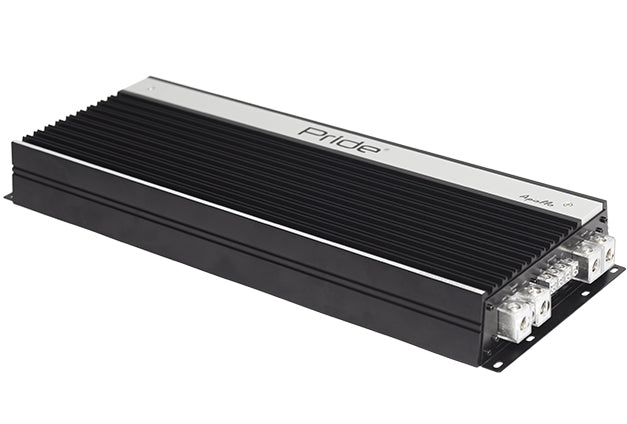
When you’re aiming to upgrade your car’s sound system, few components make a bigger impact than a quality subwoofer. And if you’re looking to dive into high-performance audio, the Pride Audio subwoofer lineup is one of the most respected in the car audio world. But owning a great sub isn’t enough—you’ve got to install it the right way to really get the best results.
Whether you’re an experienced installer or just getting into the car audio scene, this guide will walk you through everything you need to know to make sure your Pride Audio subwoofer performs at its peak. From wiring tips to tuning advice, we’re covering it all.
Why Choose a Pride Audio Subwoofer?
Pride Audio has built a strong reputation for delivering hardcore bass performance. These subs are known for their insane power handling, clean sound quality, and durability—even when pushed to their limits. Whether you’re building a system for daily driving or competitive SPL, Pride Audio subs deliver serious low-end response.
They’re not just about brute force either. A lot of users appreciate the balance between loudness and musicality. You get deep, clean bass that doesn’t just shake your mirrors—it sounds good doing it. That’s why Pride has such a loyal following.
Planning Your Install: Don’t Skip This Step
Before you even unbox your subwoofer, it’s crucial to take some time to plan out your installation. This might seem like a small thing, but it actually sets the foundation for everything that follows.
Start by asking yourself a few questions:
-
What kind of sound are you going for—tight and punchy or low and rumbly?
-
Do you want a sealed or ported box?
-
Are you working with a sedan, SUV, or hatchback?
-
How much space are you willing to give up for your sub enclosure?
Once you have your goals in mind, you can start deciding on the subwoofer box, amplifier, wiring, and other necessary gear. Skipping this planning phase usually results in poor performance or costly do-overs.
Picking the Right Enclosure for Your Pride Sub
Your subwoofer box isn’t just a place to house the sub—it plays a massive role in how your system sounds. Pride Audio subs are high-output drivers, and they really shine when matched with the right enclosure.
Here’s a quick breakdown of your main enclosure options:
-
Sealed Box – Best for clean, accurate bass. You’ll get tighter response and a smaller footprint, but you’ll sacrifice some output compared to ported setups.
-
Ported Box – Delivers louder, deeper bass. Great for anyone who wants to really feel the low-end, but it does require more space and precise tuning.
-
Bandpass Box – Offers serious output but is usually more complex to design and tune. Better for SPL builds rather than daily listening.
If you’re unsure which direction to go, many car audio forums and groups online have box designs made specifically for Pride Audio subs. Or, you can check out prefab boxes that match your sub’s specifications. Just don’t skimp on the enclosure—it makes or breaks your setup.
Power It Right: Amplifier Matching and Wiring
Matching your Pride Audio subwoofer with the right amplifier is crucial. These subs are built to handle some serious power, and you want to give them what they need without clipping or distortion.
Let’s say you have a Pride sub rated at 2000W RMS. You’ll want an amp that can deliver close to that RMS rating, but not much more. Too little power and your sub won’t perform. Too much, and you could damage it—especially if the amp clips from being pushed too hard.
Wiring is another key factor. Use high-quality power and ground wire (at least 1/0 gauge for high-power setups). Make sure all your grounds are solid and sanded down to bare metal. And if you’re running multiple subs or amps, a proper distribution block will keep things tidy and efficient.
Tuning Your Subwoofer for Maximum Output
After the sub and amp are installed, tuning is what really unlocks the system’s full potential. There’s no one-size-fits-all answer here, but there are a few universal tips that can get you on the right track.
-
Set your gains properly – Use an oscilloscope, multimeter, or at the very least, an audio test track and your ears. Gains are not volume knobs.
-
Tune your crossover points – Most systems sound best with the low-pass filter set around 80-100Hz. You can adjust slightly higher or lower depending on your mids and highs.
-
Phase alignment – If your bass sounds weak or seems to disappear, try flipping the phase switch or rewiring the sub to see if things tighten up.
-
Use a bass knob or DSP – A remote bass knob gives you control from the driver’s seat, while a DSP can help fine-tune your soundstage and eliminate peaks or dips in the frequency response.
Fine-tuning can take some time, but the results are well worth it.
Dealing With Electrical Demands
Pride Audio subs are beasts, and they draw a lot of power when you’re cranking the volume. To prevent dimming lights, voltage drops, or clipping, you might need to upgrade your car’s electrical system.
Here’s what to consider:
-
Big 3 upgrade – Replace the main factory power and ground wires with larger gauge wiring.
-
High-output alternator – Keeps voltage steady even under heavy loads.
-
Secondary battery or supercapacitor – Helps handle voltage dips during bass hits.
Even with a single sub, these upgrades can make your system more reliable and prevent headaches down the road.
Sound Deadening and Vibration Control
When your subwoofer is hitting hard, it’s not just your chest that feels it—your entire vehicle does too. Rattles, vibrations, and resonance can ruin your listening experience.
Adding sound-deadening material to doors, trunk panels, and even the floor can really clean up your sound. Brands like Dynamat, Second Skin, or Noico are popular for a reason. They’re worth the investment.
Foam strips, closed-cell liners, and even mass-loaded vinyl can also help absorb energy and make your ride sound smoother and quieter.
Break-In Period: Does It Matter?
A lot of people argue over whether subs need to be broken in. With Pride Audio subs, it’s generally a good idea to go easy for the first 10–20 hours of play. That means moderate volume and avoiding full-throttle bass sessions right away.
This allows the suspension (surround and spider) to loosen up a bit and ensures everything settles in before you push it to the max. After that, you’re free to go full beast mode.
Real-World Performance Tips
Here are a few extra tips that often get overlooked but can make a big difference in real-world performance:
-
Seal up air leaks in your box – Even a tiny gap can ruin output.
-
Face the subwoofer the right direction – In a trunk, firing subs toward the back of the car tends to yield better bass reinforcement.
-
Test different positions – Sometimes moving the sub just a few inches can dramatically change how it sounds inside the cabin.
-
Use quality RCAs and speaker wire – Cheap cables can cause interference and signal loss.
Pride Audio Subwoofer Maintenance
These subs are built tough, but a little maintenance goes a long way. Keep your enclosure dry, secure, and tightly mounted. Check the wiring connections regularly. If you notice any distortion, inspect the cone and surround for damage.
Also, monitor your amp’s temperature. Overheating can lead to failure or thermal shutdown, which kills the vibe fast. Ventilation is key—don’t bury your amp under carpets or hide it in tight spaces.
Wrapping It Up
Installing a Pride Audio subwoofer is more than just plugging in a speaker. It’s about designing a system that brings out the best in the gear. From enclosure choice and amp matching to electrical upgrades and tuning, every step plays a role in how hard your system hits and how good it sounds.
When done right, a Pride sub can transform your vehicle into a mobile concert stage—or a rolling earthquake machine, depending on how you like it. Either way, you’re in for a wild ride.
If you’re looking for more gear, tips, or help setting up your system, you can check out more on our website at eliteautogear.com. We’ve got the tools and the knowledge to help you get that next-level sound you’ve been dreaming of.



